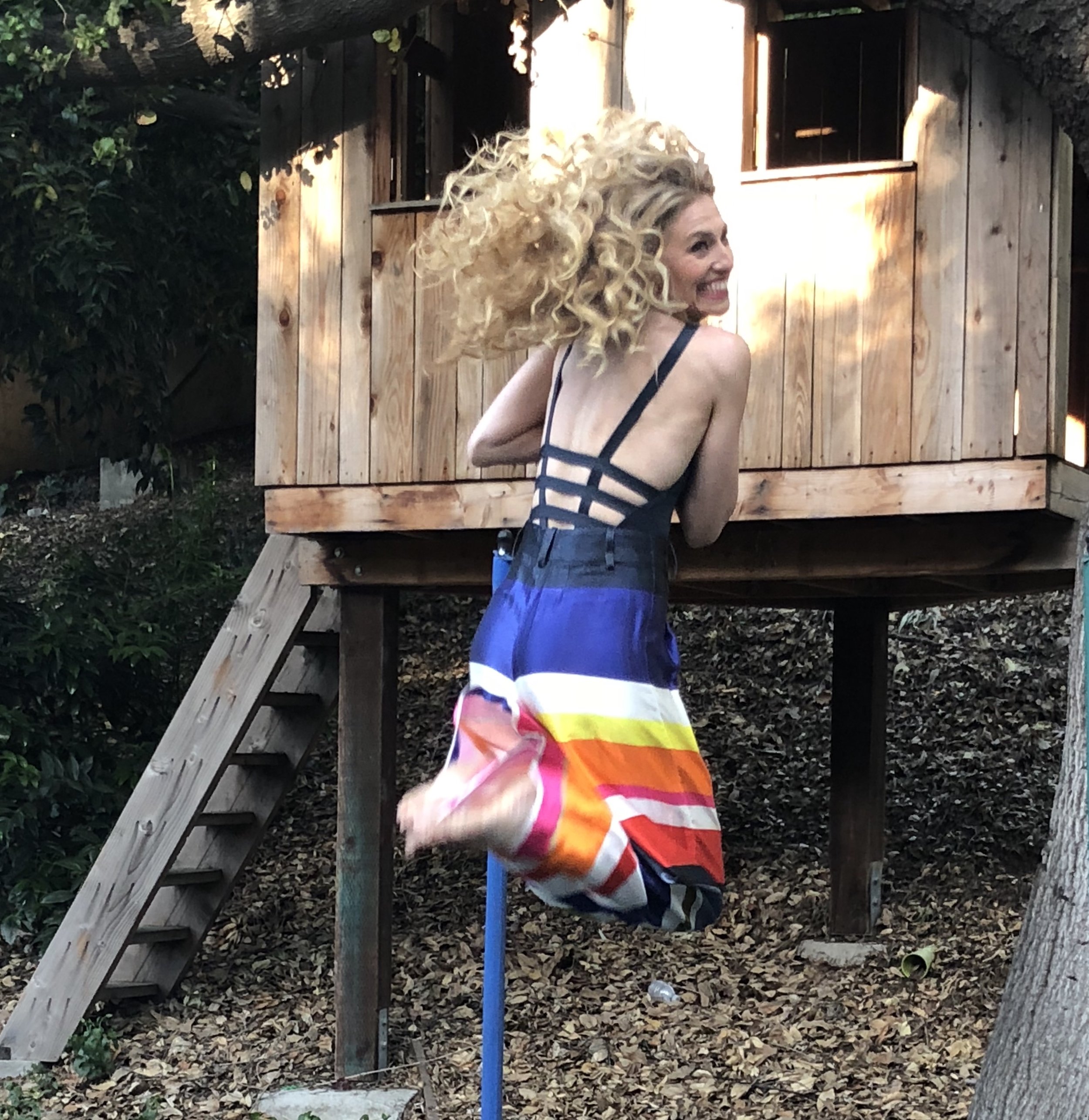
COACHING THROUGH THE SOMATIC EXPERIENCING LENS
We work the edges of the stress, slowly and gently, resourcing the nervous system frequently, to make sure clients do not re-traumatize.
If I’m supporting a creative goal, we can resolve or re-organize a great deal — in real time — over one or two sessions.
How does Somatic Experiencing work?
Dr Peter Levine created this technique after observing animals in the wild vs those in captivity. The animals in the wild did not exhibit symptoms of trauma. Those in captivity did. The defining difference?
After stressful events, animals in the wild let their bodies do the talking; shaking off the stress…or moving their bodies according to the needs of their Autonomic Nervous Systems. (The same system we as humans have, that controls our fight/ flight/ freeze/ fawn responses).
So…it’s like we’re working with your inner “creature” to help it feel safe again.
Once we establish a feeling of relative safety, it is often surprising how much our thinking shifts, and our habits and behaviors change with greater ease. If we could think our way out of our issues, we already would have.
Somatic Experiencing is what we call a “ground up” technique—meaning it’s less focused on verbal processing or talking, than other traditional “top down” or talk therapy and coaching modalities. As a result, it works extremely well for both children and adults. We work with what comes up in the body in real time in the way of sensations. We are looking to support energy that’s been trapped or stagnant, to move. We are looking to support any incomplete survival processes in your body, to help them complete. For example if we are experiencing anxiety, our Nervous System is perceiving a threat. This work helps you to not only identify that threat energy in your body and move it through, it helps you to train your Nervous System to properly identify whether the threat is occurring in real time or from your past, so we can then we provide your system with what it needs to move on and not send out those threat signals any longer.
SE is also extremely compassionate because the process is “titrated”— meaning rather than focusing on the feelings of overwhelm, we work the edges of the stress energy as it comes up, slowly and gently, “resourcing” the nervous system frequently (by bringing focus to pleasant sensations) to make sure clients do not re-traumatize. We also never have to completely re-visit the stressful event. We let the body do most of the talking and tell us what is ready to move through.
What results should you expect with this technique?
Clients frequently experience increased mobility and range of movement after accidents and pain reduction/ resolution, change in cognition and executive function, improved sleep, resolution of fears and phobias. With more complex cases over time, healthier attachment, resolutions of/or vast improvements with complex traumas, digestive disorders, migraines, panic and anxiety attacks etc. the list goes on. What I personally love most about this technique, is how effective the client's own imagination is, when recruited to herald the shifts they usually experience in real time. In that regard I find it is extraordinary for children. They usually take to this work much faster than adults as they have not spent a lifetime in their heads.
The work iterates in infinite ways through each individual practitioner, though the core work and tools are universally applied. By that I mean, we often end up specializing, though are qualified to support the healing of everything from stress symptoms all the way to survivors of extreme acts of terrorism etc. Trauma is broad, our training covers all categories. But our scopes of practice differ. You may find that SEPs specialise in the areas where this system supported them most.
I personally have learned that I’m good in a crisis and seldom had help during mine, so I love to help people in this arena and I lose sleep knowing that people are not reaching their potential because they don’t have access to these kinds of tools and resources.
“Trauma has its own intelligence— it’s trying to complete itself and absent a bonafide cure, it loops.”
Transformation is real
Transformation becomes more possible in the presence of a well-attuned, well-regulated practitioner.
When guided through the body with the power of the imagination, discernible shifts can occur in real time — leaving clients feeling empowered, energized and inspired.
FAQs
If someone feels like they are in a crisis what should they do?
Someone may be having a panic attack or feel so flooded that they feel they are in a crisis. If you or someone you know find themselves in immediate danger and/or a life-threatening emergency, please call 911 or the equivalent emergency service in your area immediately.
Otherwise, Seti the International Somatic Experiencing organisation offers a protocol on a PDF here they call SCOPE
Gina Ross trains people in her Emotion Aid tool and over Covid has made the materials available to the general public. (The live link above should take you to videos and scripts of the tool for you to learn for personal use). The protocol combines EMDR with Somatic Experiencing and grounding tools to help people down-regulate in high stress situations and prevents trauma symptoms from arising after the event. I have used this tool with complete strangers to great effect, and it is one I teach my clients so they can help themselves in moments of high stress and trauma.
What do you do with clients in these situations?
If I am on call for a client I will do what I refer to as a “Triage” session which can be anywhere from 20 minutes to an hour. I will support them to come out of the panic attack, overwhelm, freeze, shock, terror etc. And make sure that they have resources around them to help them figure out next steps. I will then follow up with them to help them integrate the experience and provide them with tools to further support their nervous system. I will likely recommend a few sessions with me to process that event and teach them preventative tools such as the ones above, so that moving forward they will know what to do in these situations on their own.
For established clients, I am on call as much as possible to provide the triage service should the need ever arise.
SEPs generally have a duty of care to support strangers absent other emergency services if out in public, and can also be deployed to volunteer for natural disaster relief etc. and to support front line workers.
Can you recommend any good books on trauma and SE?
Yes! Head over to the resources page. I will gradually add to the list of suggested reading I’m compiling there along with all the other resources.
Do you consult with Companies?
I do. I have been asked to create curriculum and I can lead workshops.
How can I find a Somatic Experiencing Practitioner?
Head over to the Resources page to see the Somatic Experiencing section. There you will find a live link to the SETI website. On the site they have a global directory.
Do you and other SEPs do telehealth?
We do. Covid taught us to pivot and adapt and I have now worked with more clients on zoom or phone than in person. The work is highly effective in this format. That said, there is a physical/touch component possible in this work (with informed consent) which the client will obviously not experience over zoom.


